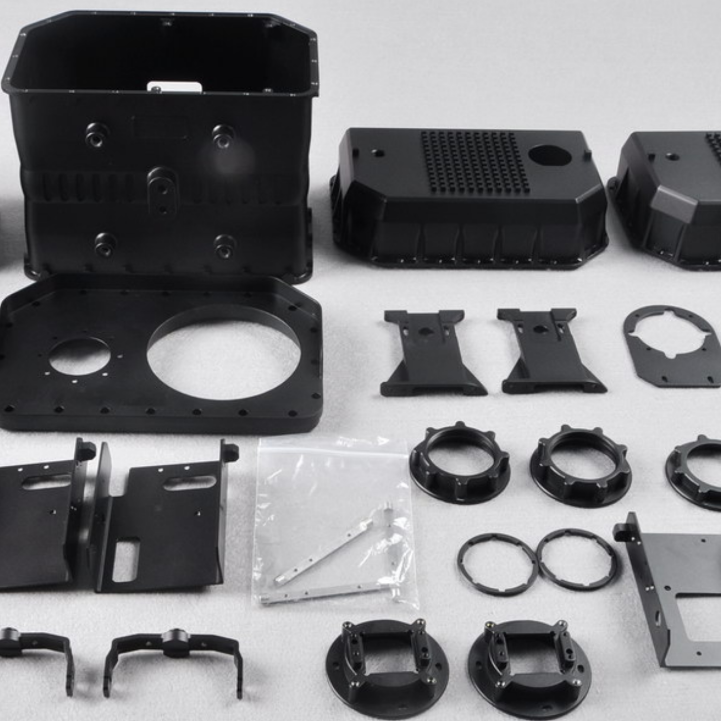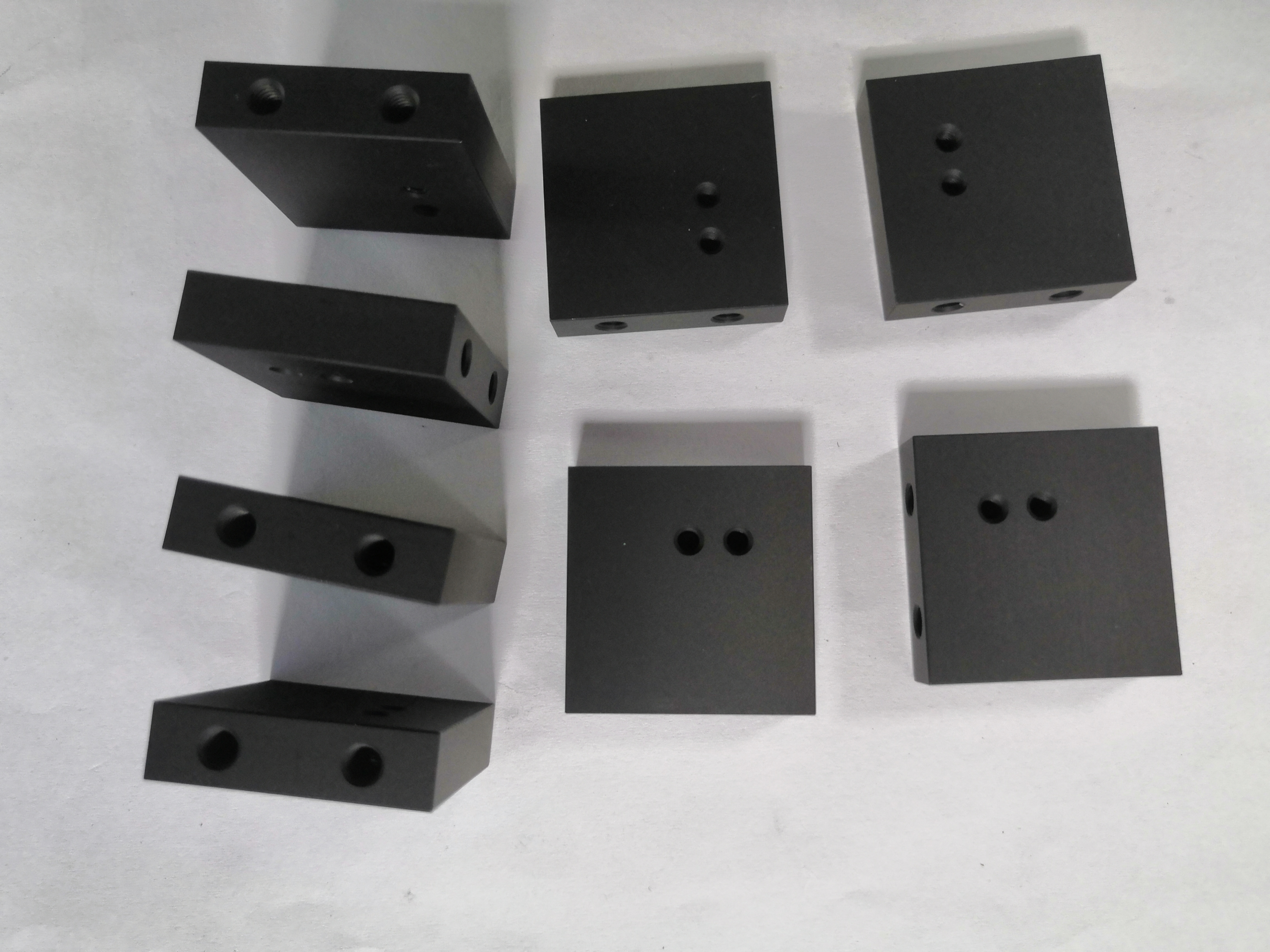Introduction
CNC (Computer Numerical Control) machining is a precise manufacturing method widely used to make complex parts and products. Although the plastic CNC machining process has traditionally been used for metals, the application of plastic materials in plastic CNC machining is also gradually increasing.
Plastic materials have unique advantages in the plastic CNC machining part, including being lightweight, easy to machine, chemically resistant, and cost-effective. This article will explore how to use plastic materials in the plastic cnc machined plastics and plastic CNC machining part process and some considerations for selecting plastic machining and processing suitable plastic part materials.

What kind of plastic can be suitable for CNC machining?
In CNC machining plastic parts, it is customary to work with materials with specific hardness and wear resistance. While metal materials have traditionally been the go-to choice, plastic materials have emerged as a viable option for most CNC machining plastics machining raw materials. Manufacturers can significantly boost their production efficiency by carefully considering the distinctive characteristics of machinable cnc machined plastic parts and machining materials instead of relying solely on metals with similar properties. The following are common types of machinable machined cnc plastic machining parts and materials:
Polyurethane (PU)
Advantages and disadvantages
Advantages
This material can be used to manufacture various products, each with varying levels of hardness to suit different needs. Its versatility allows for a diverse array of applications across various industries.
Excellent durability, ideal for producing components that require resistance to wear and tear.
Not only does it exhibit high strength, but it also showcases remarkable toughness, making it a top choice for demanding tasks.
The material’s ability to effectively dampen vibrations and impacts makes it ideal for applications where protection against sudden forces is crucial.
Disadvantages
When exposed to certain solvents and chemicals, dissolution or expansion can occur.
The pricing of a few polyurethane goods is increased.

Application field
Engineering parts: Components like seals, bearings, gaskets, etc., are preferred for their resistance to wear and corrosion.
Shock-absorbing materials: Automobiles commonly have shock-absorbing parts such as pads, gaskets, and other mechanical equipment to reduce impact and vibrations.
Sports equipment: For instance, running shoes often have a cushioned bottom, while rackets may feature vibration cushioning pads.
Seals: Polyurethane seals are extensively used in hydraulic, automotive braking systems, and other fields.
Polyamide (nylon)
Advantages and disadvantages
Advantages
High strength and toughness: Nylon is a strong and durable material that can withstand high impact and tension, making it ideal for applications that require strength and impact resistance.
Wear resistance: Nylon is famous for manufacturing wear-resistant gears, bearings, and other parts due to its excellent wear resistance and ability to maintain a long service life in friction and wear environments.
Self-lubricity: The nylon surface possesses self-lubricity, which decreases the friction coefficient and expands the lifespan of mechanical parts. Therefore, it has become extensively popular within the field of mechanical manufacturing.
High-temperature resistance: The heat resistance of nylon varies depending on the type used. Its stability and performance should be monitored at high temperatures.
Processing properties: Nylon is highly versatile and can be easily molded into complex shapes using various methods, such as injection molding and extrusion, making it ideal for manufacturing intricate parts.
Disadvantages
Water absorption: Nylon materials have some degree of water absorption, which may cause size variations and reduce performance, particularly in damp environments.
Thermal stability: Nylon has poor thermal stability, which causes it to soften quickly at high temperatures, reducing its high-temperature performance.
High price: Nylon costs are relatively high compared to other ordinary plastic materials.

Application field
Mechanical manufacturing: Nylon is commonly utilized in mechanical manufacturing for its excellent wear resistance and self-lubrication properties, particularly in the machining and production of bearings, gears, guides, and other components.
Automotive industry: Nylon is used in various parts of automotive manufacturing processes, such as engine parts, body components, wheel washers, etc., because of its lightweight, wear, and impact resistance.
Electronic appliances: Nylon is used in the manufacture of electronic appliances, including the shell, socket, switch, and other parts, because of its insulation properties, high stiffness, and mechanical strength.
Polytetrafluoroethylene (PTFE)
Advantages and disadvantages
Advantages
PTFE exhibits remarkable resistance to a wide array of chemicals, including potent acids, bases, and organic solvents.
Very low coefficient of friction: PTFE’s coefficient of friction is very low, making it suitable for producing parts with excellent lubrication due to its smooth surface.
High-temperature resistance: PTFE is highly heat resistant and stable between -200°C to 260°C.
Excellent electrical insulation: PTFE is an excellent electrical insulation material that maintains stable electrical properties even in high-frequency environments.
Inertness: PTFE’s chemical inertness makes it difficult to react with other substances, making it suitable for use in chemical environments.
Ultraviolet resistance: PTFE has good resistance to ultraviolet light and other environmental factors and is inaccessible to age.
Disadvantages
High processing difficulty: Due to PTFE’s inertia and stability, the processing difficulty is high, requiring specific equipment and technology.
High cost: The production cost of PTFE is high, so the price is relatively high.
Low mechanical strength: Compared with other engineering plastics, PTFE has low mechanical strength and is prone to deformation.
Application field
Electrical and electronics: PTFE is used to manufacture wires, cables, connectors, and printed circuit boards due to its excellent electrical insulation and mechanical properties.
Medical devices: PTFE’s chemical inertness and heat resistance make it an ideal material for medical devices and implants.
Aerospace: PTFE is used in seals, coatings, plastics, and other components in the aerospace sector because it is lightweight and has heat, chemical, and UV resistance.
Mechanical construction: PTFE’s low friction and wear resistance coefficient makes it an ideal material for manufacturing bearings, washers, and seals for plastics and glass.

Advantages of CNC machining plastics
Low plastic material cost: The cost of plastic materials is very low, usually lower than that of metal materials, so using CNC machines for processing plastics can effectively reduce manufacturing costs.
Fast processing speed: Plastic materials are easy to process, and CNC machine tools can quickly cut them, shortening the plastic production cycle and improving production efficiency.
High-precision plastic machining: CNC machine machining tools are controlled by computer programs. Many plastics can achieve micron-level plastic machining process accuracy to ensure that machined plastic parts meet the design requirements.
Lightweight: Plastic materials are lighter than metal materials, which helps to reduce the weight of products, especially in aerospace, automotive, and other fields.
Electrical insulation properties: Many plastic materials are excellent insulators for manufacturing electrical and electronic equipment and communications components.
Low coefficient of friction: Plastic materials such as PTFE have an extremely low coefficient of friction and are suitable for manufacturing parts with high lubricity requirements, such as bearings and sliders.
(Strong plastic customization and machining): The same CNC machine and machining process can accurately process and machine various plastic components and parts of different shapes and sizes according to the design requirements to meet multiple customization and machining needs.
Weather resistance: Some plastic materials are resistant to environmental factors (such as ultraviolet light, humidity, salt water, etc.) and are suitable for outdoor applications in demanding environments.
Diversity of different polymers: There is a wide variety of plastic materials, including nylon, PTFE, polyethylene, polypropylene, and polyformaldehyde. Other materials have different characteristics, mechanical properties, and uses, and suitable materials can be selected according to specific needs.

CNC processing plastic precautions
CNC plastic machining plastics must pay attention to several matters to ensure the processing process goes smoothly and a high-quality finished product is obtained. These considerations cover everything from material selection to processing parameters, safety, and environmental aspects. The following are the details that need attention when plastic with CNC machined plastics and machining plastics:
Material selection
Select suitable plastic materials: It is important to choose the appropriate plastic material based on the parts’ use and performance requirements—factors to consider include mechanical properties, chemical resistance, and heat resistance. Common materials include nylon, PTFE, high density polyethylene, polypropylene, and polyformaldehyde.
Material quality and specifications: Ensure that the quality and specifications of the selected materials meet the processing requirements. Check the material for defects, impurities, or deformations.
Storage and pretreatment of materials: Before processing plastic materials, it is important to consider storage conditions as they may absorb moisture and be sensitive to humidity. It may be necessary to pre-treat the material by drying it.

Machining parameter
Cutting speed and feed speed: Reasonable selection of cutting speed and feed speed is essential due to the characteristics of plastic materials. If the speed is too fast, it can cause the material to melt or deform; if it is too slow, it will reduce efficiency.
Cutting depth: Choose an appropriate cutting depth based on material and equipment abilities to prevent material deformation and tool wear from cutting too much material at once.
Tool selection: Select appropriate tools for processing plastics, such as high-speed steel, carbide, or coated tools. Ensure the tool is sharp and maintains good cutting performance.
Cooling and lubrication: Coolants and lubricants can improve machining quality by reducing friction and heat buildup. However, ensuring these substances are non-harmful to plastic materials and the processing environment is essential.
Cutting force control: The cutting force must be monitored to prevent material deformation and machine damage due to excessive force.
Treatment after processing
Check the quality of the finished product: Once the processing has been finalized, it is essential to verify if the dimensions and standards of the final product align with the specifications outlined in the design. This step is crucial in ensuring that the result meets the intended requirements and is ready for further evaluation or use. By conducting this assessment, any discrepancies or deviations from the design criteria can be identified and addressed promptly.
Post-treatment: To guarantee the components’ excellence and aesthetic appeal, additional procedures, such as deburring, polishing, or surface treatment, must be carried out after the treatment. These supplementary steps are undertaken as required to enhance the parts’ overall quality and visual appeal. By implementing post-treatment measures, any imperfections or rough edges can be eliminated, resulting in a flawless and refined final product.
Record machining parameters: Maintaining a comprehensive record of machining parameters and processes is essential for future reference and continuous improvement. By diligently documenting these details, organizations can ensure that valuable knowledge and insights are not lost over time. These records are useful for troubleshooting, analyzing performance, and identifying areas for enhancement in machining operations.
Conclusion
Using plastic materials in CNC machining can bring many benefits, including reducing costs, improving processing efficiency, and producing high-quality parts. By selecting suitable plastic materials, optimizing processing parameters, and paying attention to the details in the processing process, the advantages of plastic materials can be fully utilized to manufacture high-precision products that meet the requirements.
